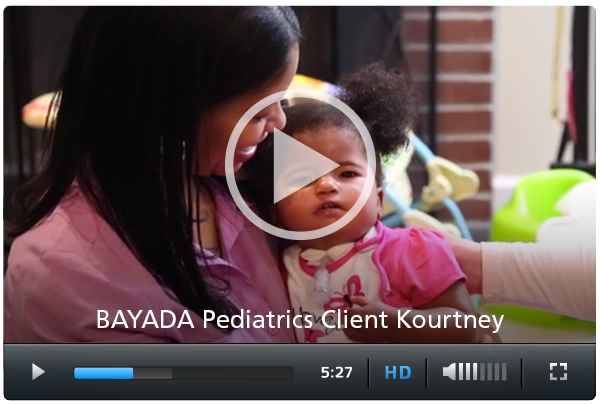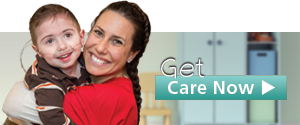Pediatric Diagnosis-Specific Resources
Information on pediatric diseases, conditions, and disorders
BAYADA Pediatrics cares for children with a wide range of diagnoses. Below are some of the more common conditions affecting our clients.
Autism/Pervasive Developmental Disorder and Autism Spectrum Disorder
Autism/Pervasive Developmental Disorder and Autism Spectrum Disorder are a group of developmental brain disorders, collectively called autism spectrum disorder (ASD). The term "spectrum" refers to the wide range of symptoms, skills, and levels of impairment or disability, that children with ASD can have. Some children are mildly impaired by their symptoms, while others are severely disabled. Visit www.nimh.nih.gov for more information on ASD..
Bronchopulmonary dysplasia or BPD
Bronchopulmonary dysplasia or BPD is a serious lung condition that affects infants. BPD mostly affects premature infants who need oxygen therapy (oxygen given through nasal prongs, a mask, or a breathing tube). Visit www.nhlbi.nih.gov for more information on BPD..
Cerebral Palsy (CP)
Cerebral Palsy (CP) is caused by brain injury or abnormal development of the brain that occurs either before, during, or immediately after birth. It affects body movement, muscle control, muscle coordination, muscle tone, reflex, posture, and balance. It can also impact fine motor skills, gross motor skills, and oral motor functioning. Visit www.cerebralpalsy.org for more information on cerebral palsy..
Developmental delay
Developmental delay is a chronological delay in the appearance of normal developmental milestones achieved during infancy and early childhood, caused by organic, psychological, or environmental factors. Visit www.medical-dictionary.com for more information about developmental delay..
Down syndrome
Down syndrome, which occurs when an individual has a full or partial extra copy of chromosome 21, is often associated with the developmental disabilities caused by this extra chromosome. Visit www.ndss.org for more information about Down syndrome..
Epilepsy
Epilepsy, also known as a seizure disorder, is a medical condition that produces seizures affecting a variety of mental and physical functions. Visit epilepsyfoundation.org to learn more about epilepsy..
Failure to thrive
Failure to thrive refers to children whose current weight or rate of weight gain is significantly lower than that of other children of similar age and gender. Visit www.nlm.nih.gov to learn more about failure to thrive..
Gastroesophageal reflux disease (GERD)
Gastroesophageal reflux disease (GERD is a condition in which the stomach contents (food or liquid) leak backwards from the stomach into the esophagus (the tube from the mouth to the stomach). This action can irritate the esophagus, causing heartburn and other symptoms. Visit www.nlm.nih.gov to learn more about GERD..
Hypoplastic left heart syndrome
Hypoplastic left heart syndrome occurs when parts of the left side of the heart (mitral valve, left ventricle, aortic valve, and aorta) do not develop completely. The condition is present at birth (congenital). Visit www.nlm.nih.gov to learn more about Hypoplastic left heart syndrome..
Microcephaly
Microcephaly is a condition of abnormal smallness of the head, usually associated with developmental disabilities. Visits www.nlm.nih.gov to learn more about microcephaly.
Premature infant
Premature infant is a baby born before 37 completed weeks of gestation (more than 3 weeks before the “due date”). Visit www.nlm.nih.gov to learn more about a premature infant.
Spina Bifida
Spina Bifida, literally meaning “split spine,” happens when a baby is in the womb and the spinal column does not close all of the way. Every day, about eight babies born in the United States have Spina Bifida or a similar birth defect of the brain and spine. Visit the www.spinabifidaassociation.org to learn more about Spina Bifida..
Spinal Muscular Atrophy (SMA)
Spinal Muscular Atrophy (SMA) is a motor neuron disease, affecting the voluntary muscles that are used for activities such as crawling, walking, head and neck control, and swallowing. It is a relatively common "rare disorder"; approximately 1 in 6,000 babies born are affected, and about 1 in 40 people are genetic carriers. Visit www.curesma.org for more information on Spinal Muscular Atrophy..
Tracheomalacia
Tracheomalacia is a condition characterized by flaccidity of the tracheal support cartilage which leads to tracheal collapse especially when increased airflow is demanded. Visit www.nlm.nih.gov to learn more about Tracheomalacia..


